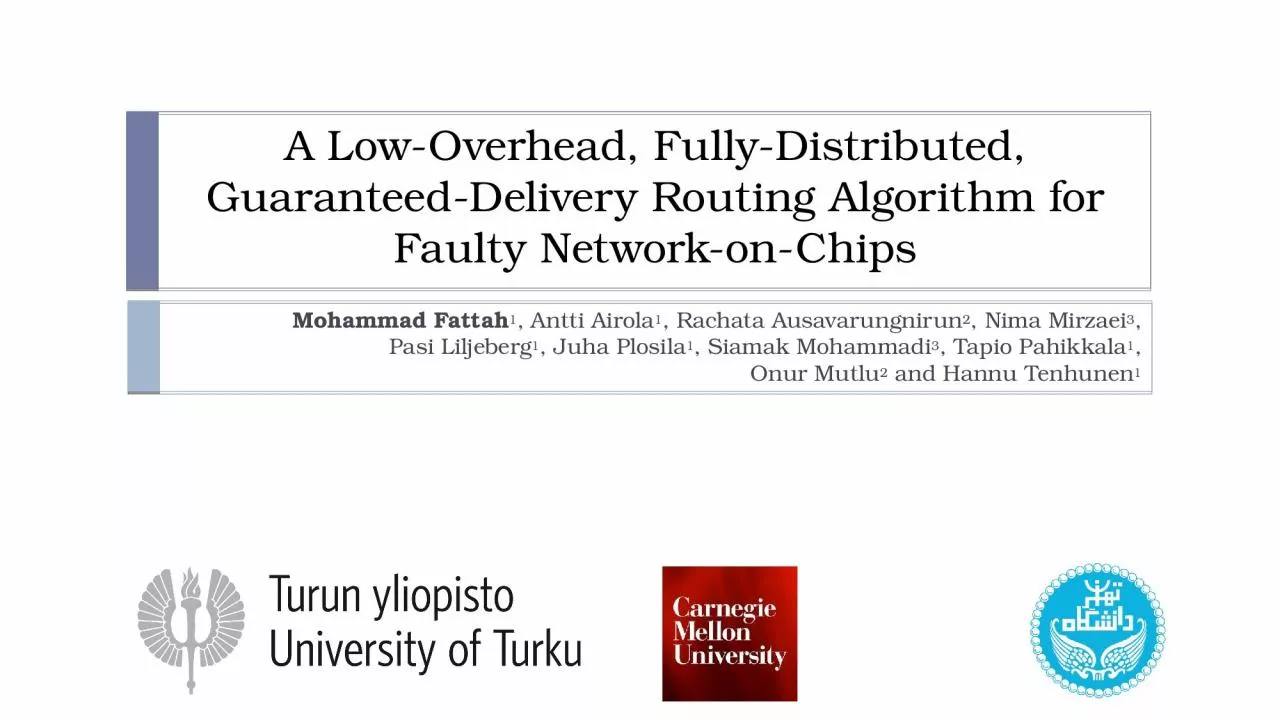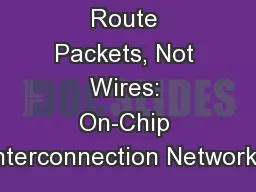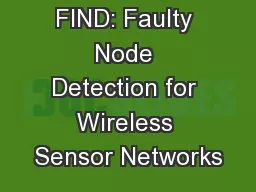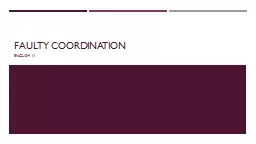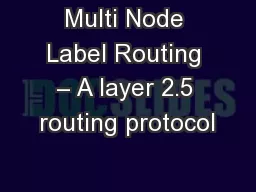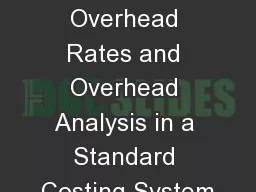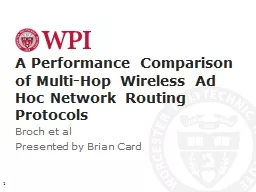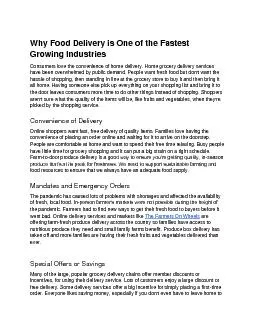PPT-A Low-Overhead, Fully-Distributed, Guaranteed-Delivery Routing Algorithm for Faulty Network-on-Chip
Author : thomas | Published Date : 2023-09-23
Mohammad Fattah 1 Antti Airola 1 Rachata Ausavarungnirun 2 Nima Mirzaei 3 Pasi Liljeberg 1 Juha Plosila 1 Siamak Mohammadi 3 Tapio Pahikkala
Presentation Embed Code
Download Presentation
Download Presentation The PPT/PDF document "A Low-Overhead, Fully-Distributed, Guara..." is the property of its rightful owner. Permission is granted to download and print the materials on this website for personal, non-commercial use only, and to display it on your personal computer provided you do not modify the materials and that you retain all copyright notices contained in the materials. By downloading content from our website, you accept the terms of this agreement.
A Low-Overhead, Fully-Distributed, Guaranteed-Delivery Routing Algorithm for Faulty Network-on-Chip: Transcript
Download Rules Of Document
"A Low-Overhead, Fully-Distributed, Guaranteed-Delivery Routing Algorithm for Faulty Network-on-Chip"The content belongs to its owner. You may download and print it for personal use, without modification, and keep all copyright notices. By downloading, you agree to these terms.
Related Documents

